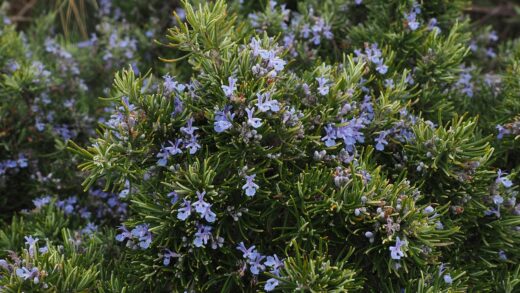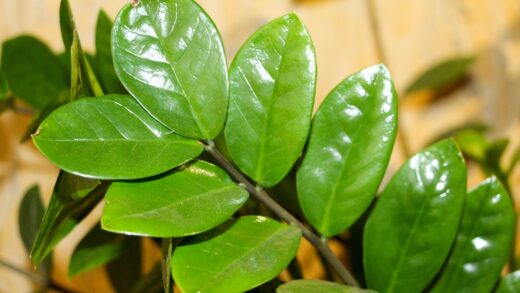Providing the peach-leaved bellflower with the appropriate level of nutrients is a delicate balancing act that is crucial for achieving robust growth and a spectacular floral display. This perennial is not an exceptionally demanding plant and often thrives in soils of average fertility, reflecting its natural predisposition to woodland clearings and meadows rather than overly enriched garden beds. In fact, an excess of nutrients, particularly nitrogen, can be more detrimental than a slight deficiency. Over-fertilization can lead to a profusion of weak, leggy foliage at the expense of the desired beautiful bell-shaped flowers, and can make the plant more susceptible to pests and diseases. Therefore, the goal is not to feed heavily, but to ensure the soil provides a steady, balanced supply of the essential elements needed for healthy development.
The most effective and sustainable approach to fertilizing Campanula persicifolia begins with the soil itself. Building a foundation of healthy, organically rich soil at the time of planting provides a long-term source of slow-release nutrients that perfectly suits the plant’s modest requirements. Incorporating materials like compost, leaf mould, or well-rotted manure improves not only the fertility but also the structure and water-retention capabilities of the soil. This holistic approach creates a thriving soil ecosystem that supports the plant naturally, often negating the need for frequent applications of synthetic fertilizers. An annual top-dressing with these same organic materials can replenish nutrients and maintain this healthy soil environment from year to year.
When supplemental fertilization is deemed necessary, perhaps in cases of very poor, sandy soil or for plants grown in containers, the choice of fertilizer and the timing of its application are paramount. A balanced, slow-release formula is almost always preferable to a fast-acting liquid feed, as it provides a more controlled and sustained delivery of nutrients, mimicking the natural decomposition processes in the soil. The timing is also critical, with early spring being the most opportune moment to provide a nutritional boost, just as the plant is entering its phase of active growth. Applying fertilizer later in the season can stimulate new, tender growth that may be vulnerable to damage from early frosts.
Ultimately, successful nutrient management for the peach-leaved bellflower is about observation and moderation. The plant’s own appearance is the best indicator of its nutritional status. Healthy, vibrant green leaves and strong, flower-laden stems are signs of a well-nourished plant. By focusing on creating excellent soil conditions and applying supplemental fertilizers judiciously and only when needed, you can ensure your bellflowers have everything they require to perform beautifully in your garden without the risks associated with over-feeding.
Understanding the plant’s nutritional needs
The peach-leaved bellflower has relatively modest nutritional requirements compared to many other garden perennials. It thrives in soil that is moderately fertile, and its primary need is for a balanced supply of the three main macronutrients: nitrogen (N), phosphorus (P), and potassium (K). Nitrogen is essential for healthy leaf and stem growth, phosphorus plays a crucial role in root development and flower production, and potassium contributes to the overall vigour and disease resistance of the plant. A balanced supply of these elements ensures the plant grows in a well-proportioned and healthy manner.
More articles on this topic
An overabundance of nitrogen is a particular concern for this species. While a sufficient amount is necessary for foliage development, too much will cause the plant to produce an excess of soft, lush leaves and long, weak stems that are unable to support the weight of the flowers, leading to a floppy, untidy appearance. This excessive leafy growth also comes at the direct expense of flower production, resulting in a disappointing floral display. Therefore, it is important to avoid high-nitrogen fertilizers or fresh, un-rotted manures, which can release a large amount of nitrogen all at once.
The plant also requires a range of micronutrients, such as iron, magnesium, and calcium, but these are typically present in sufficient quantities in average garden soil, especially if it is regularly amended with organic matter. The ideal soil pH for the peach-leaved bellflower is neutral to slightly alkaline, which is also the pH range at which most soil nutrients are most readily available for the plant to absorb. If the soil is too acidic, the availability of certain key nutrients can be restricted, even if they are physically present in the soil.
The most sustainable way to meet these nutritional needs is by fostering a healthy soil environment. Soil rich in organic matter contains a diverse population of microorganisms that are constantly breaking down organic material and releasing nutrients in a form that plants can easily use. This creates a natural, slow-release feeding system that provides a steady and balanced diet for your bellflowers, perfectly aligning with their modest requirements and preventing the boom-and-bust cycles that can be caused by synthetic fertilizers.
The role of organic matter
The cornerstone of any successful fertilization strategy for the peach-leaved bellflower is the incorporation of organic matter into the soil. Materials such as garden compost, well-rotted animal manure, leaf mould, or shredded bark provide a wealth of benefits that go far beyond simple nutrition. When mixed into the soil at planting time, organic matter fundamentally improves its physical structure. In heavy clay soils, it helps to separate the fine particles, improving drainage and aeration. In sandy soils, it acts like a sponge, helping to retain both moisture and nutrients that would otherwise leach away quickly.
More articles on this topic
From a nutritional standpoint, organic matter is a complete and balanced source of food for your plants. It contains not only the essential macronutrients but also a full spectrum of micronutrients. Critically, these nutrients are released slowly over time as the organic material is decomposed by soil microbes. This slow-release action is perfectly suited to the needs of the peach-leaved bellflower, providing a gentle, continuous supply of nutrients throughout the growing season without the risk of burning the roots or causing the kind of weak, excessive growth associated with fast-acting chemical fertilizers.
An annual application of organic matter as a top-dressing or mulch in the spring is an excellent way to maintain soil fertility. Simply spread a one to two-inch layer of compost or well-rotted manure on the soil surface around the base of the plants, taking care not to pile it up against the stems. Over the season, earthworms and other soil organisms will gradually work this material down into the soil profile. This annual ritual not only replenishes the nutrients used by the plant in the previous year but also continues to improve the soil’s structure and health over the long term.
Using organic matter also contributes to a healthier overall garden ecosystem. It provides food and habitat for beneficial microorganisms, insects, and earthworms, which in turn help to suppress soil-borne diseases and pests. A garden with healthy, living soil is more resilient and requires fewer interventions in the form of pesticides or fungicides. By focusing on feeding the soil with organic matter, you are in turn feeding your plants in the most natural and effective way possible.
Using chemical fertilizers wisely
While a soil-first approach based on organic matter is always recommended, there are situations where the judicious use of a chemical fertilizer may be beneficial for peach-leaved bellflowers. This might be the case if you are gardening in very poor, nutrient-deficient soil, or if a soil test reveals a specific deficiency. It can also be useful for plants grown in containers, as the limited volume of soil in a pot can become depleted of nutrients more quickly than garden soil. If you do choose to use a chemical fertilizer, it is crucial to do so correctly to avoid harming your plants.
The best choice for this plant is a balanced, slow-release granular fertilizer. Look for a product with a relatively even N-P-K ratio, such as 5-10-5 or 10-10-10. The slightly higher middle number (phosphorus) can be beneficial as it supports strong root development and flowering. Slow-release formulations are coated to release their nutrients gradually over a period of weeks or months, which is much healthier for the plant than a sudden, large dose of nutrients. This mimics the gentle feeding action of organic matter and reduces the risk of fertilizer burn.
The timing of the application is critical. The one and only time to apply a granular fertilizer is in the early spring, just as the new basal foliage is beginning to grow actively. This provides the plant with the nutrients it needs to support its main growth spurt and the development of its flower stalks. Sprinkle the recommended amount of fertilizer, according to the package directions, on the soil surface around the plant, keeping it away from the crown and foliage. Lightly scratch it into the top inch of soil and then water the area thoroughly to activate the fertilizer and help it start moving down into the root zone.
Avoid applying fertilizer late in the growing season, especially from late summer onwards. A late-season application can stimulate a flush of new, tender growth that will not have time to harden off before the first frosts arrive. This new growth is highly susceptible to frost damage, which can weaken the entire plant and make it more vulnerable to winter injury. It is always better to err on the side of caution; if in doubt, it is safer to under-fertilize than to over-fertilize this particular perennial.
Recognizing nutrient deficiencies and excesses
Learning to “read” your plants is a key skill for any gardener, and the foliage of the peach-leaved bellflower can often provide clues about its nutritional status. A healthy, well-nourished plant will have leaves that are a vibrant, uniform green colour and will exhibit steady, strong growth. While this plant is generally trouble-free, certain symptoms can indicate an imbalance that may need to be addressed. It is important, however, to first rule out other potential causes, such as improper watering, disease, or pest issues, which can sometimes produce similar symptoms.
One of the most common signs of a nutrient deficiency is chlorosis, or the yellowing of leaves. If the older, lower leaves on the plant are turning yellow while the new growth remains green, it may indicate a nitrogen deficiency. If the yellowing occurs between the veins on the newer, upper leaves, it could be a sign of an iron or magnesium deficiency, which is more common in alkaline soils. Stunted growth and a poor or non-existent flowering display can also be signs that the plant is lacking essential nutrients, particularly phosphorus.
Conversely, the signs of over-fertilization can be just as clear. As previously mentioned, an excess of nitrogen will result in overly lush, dark green foliage and long, weak, floppy stems that are prone to breaking. The plant may grow very tall very quickly, but it will produce very few flowers. In severe cases of over-fertilization with chemical salts, you may see brown, burnt-looking leaf tips or edges, which is a sign of fertilizer burn. This is caused by an excessive concentration of salts in the soil, which can actually draw moisture out of the plant’s roots.
If you suspect a nutritional issue, the most accurate way to diagnose the problem is with a soil test. A soil test will not only tell you the pH of your soil but will also provide a detailed breakdown of the levels of major and minor nutrients. This information allows you to address any specific deficiencies in a targeted way, rather than guessing. In most cases, however, for the adaptable peach-leaved bellflower, simply maintaining a healthy soil with an annual application of compost is all that is needed to prevent both deficiencies and excesses, keeping your plants perfectly nourished and beautiful.




















